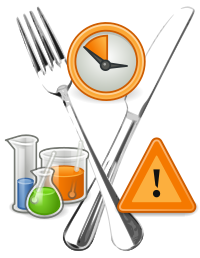
Photo from wikipedia
Bioactive peptides (BAPs) derived from food proteins have been extensively studied for their health benefits, majorly exploring their potential use as nutraceuticals and functional food components. These peptides possess a… Click to show full abstract
Bioactive peptides (BAPs) derived from food proteins have been extensively studied for their health benefits, majorly exploring their potential use as nutraceuticals and functional food components. These peptides possess a range of beneficial properties, including antihypertensive, antioxidant, immunomodulatory, and antibacterial activities, and are naturally present within dietary protein sequences. To release food-grade antimicrobial peptides (AMPs), enzymatic protein hydrolysis or microbial fermentation, such as with lactic acid bacteria (LAB), can be employed. The activity of AMPs is influenced by various structural characteristics, including the amino acid composition, three-dimensional conformation, liquid charge, putative domains, and resulting hydrophobicity. This review discusses the synthesis of BAPs and AMPs, their potential for controlling foodborne pathogens, their mechanisms of action, and the challenges and prospects faced by the food industry. BAPs can regulate gut microbiota by promoting the growth of beneficial bacteria or by directly inhibiting pathogenic microorganisms. LAB-promoted hydrolysis of dietary proteins occurs naturally in both the matrix and the gastrointestinal tract. However, several obstacles must be overcome before BAPs can replace antimicrobials in food production. These include the high manufacturing costs of current technologies, limited in vivo and matrix data, and the difficulties associated with standardization and commercial-scale production.
Journal Title: Pathogens
Year Published: 2023
Link to full text (if available)
Share on Social Media: Sign Up to like & get
recommendations!